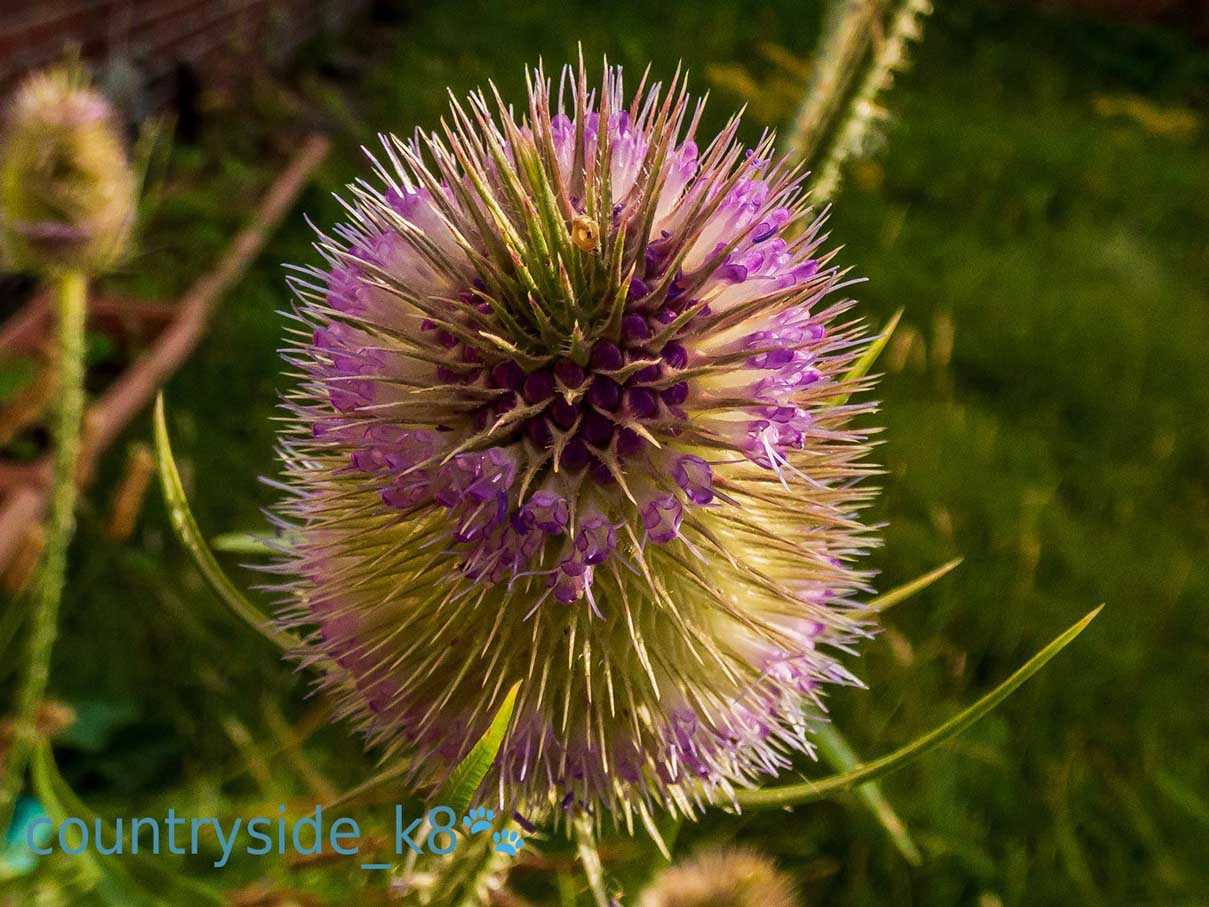
Teasel
Teasel
Latin name: Dipsacus fullonum
The Teasel is a tall plant, with thorny stems and opposite prickly leaves that join around the stem catching rain water. It produces tiny purple flowers from its prickly egg-shaped or cone-shaped head.
They flower in July and August, with the first flowers begin to open in a belt around the middle and then opens in rings up and down the flower head, forming two narrow belts as the flowering progresses. They can be found in damp grassland, field edges, roadside verges, waste ground, open woods, river banks and railway banks. They are visited by bees and other insects when in flower.
The Teasel is known for its familiar brown seed heads, which can still be seen long after the plants themselves have died back for winter. The seeds are an important winter food resource for some birds, notably the Goldfinch.
The Teasel is so called because textile makers used its spiny combs to ‘tease’ cloth. They were replaced by metal combs in the 20th century. They have proved themselves unsurpassed in finishing cloth that needs a very fine and evenly raised pile such as some hats and on the baize covering used for billiard tables. tend
Mainly found in England, with a scattered distribution elsewhere in Britain.
Created: 8 October 2018 Edited: 8 October 2018

by KLS
Mist, Mines and Ruins
Own label and private label building products
We produce, brand and supply for some of the biggest names in the industry. Read more...


